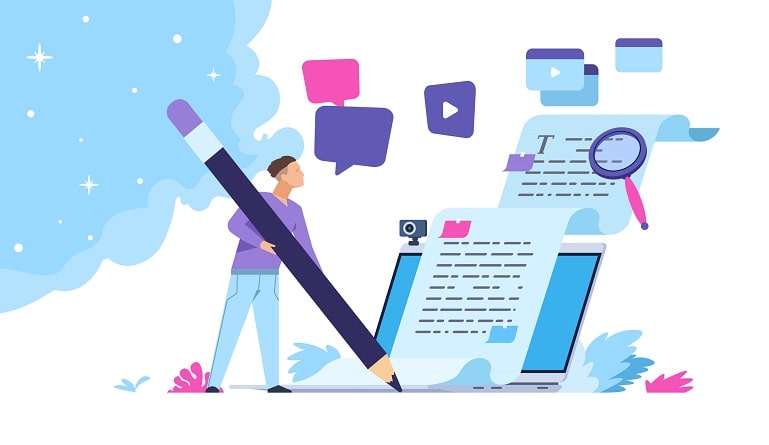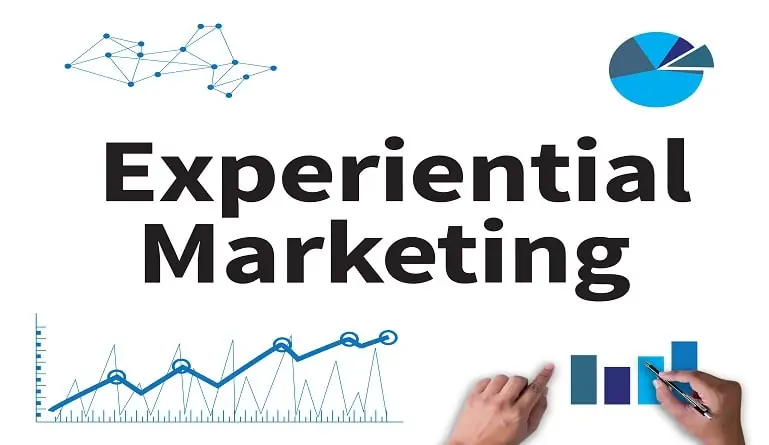Artificial intelligence is fast becoming a driving force for content innovation. In a recent survey, 100% of digital marketing agencies reported using AI as part of their content marketing workflows — yet 84% are concerned about its scalability. Read on to learn more about AI-driven content strategies and how to maximize their potential.
What is AI-Driven Content Creation?
AI-driven content creation is defined as the process of utilizing artificial intelligence algorithms and technologies to generate, curate, and optimize various forms of content, including text, images, videos, and audio, with minimal human intervention.
At its core, it leverages machine learning, natural language processing (NLP), large language models (LLMs), computer vision, and other AI techniques to automate and enhance the content creation lifecycle.
Here’s how it works. As a content creator or curator, you employ AI-powered tools and platforms to streamline and augment your content production workflows. These tools analyze vast amounts of data, including user preferences, historical content performance, market trends, and semantic structures, to derive insights and generate content tailored to your target audience.
One of the defining features of AI-driven content creation is its ability to understand context, semantics, and user intent. Also, it can automate repetitive and time-consuming tasks — such as topic ideation, research, and SEO. In addition to text, AI-driven content creation extends to multimedia formats, including visual content marketing.
5 Effective AI-Driven Content Creation Strategies in 2024
The best ways to use AI for content creation include the following:
1. AI in content personalization
AI-based personalization capabilities are now embedded in nearly every marketing tool, from HubSpot to Salesforce. This should be among the top strategies to implement if you’re getting started.
- User data analysis: The algorithms analyze vast amounts of user data, including browsing history, past interactions with content, demographic information, and social media activity to extract meaningful insights. This allows the application to understand user preferences, behaviors, and interests.
- Audience segmentation: Based on the analysis of user data, AI algorithms segment the audience into distinct groups or clusters with similar characteristics and preferences. This segmentation enables content creators to tailor their messaging, tone, and content formats to resonate with each audience segment effectively.
- Dynamic personalization: AI-driven content personalization goes beyond static user profiles. You can dynamically adjust sales content, product suggestions, and promotional offers in real time based on contextual signals. By continuously learning from user feedback and engagement metrics, AI systems adapt content delivery.
2. AI for content optimization
You can also optimize the quality of content you create using artificial intelligence. Here are some of ways to do it:
- A/B and multivariate testing: AI-powered content optimization platforms let you compare different variations of content elements such as headlines, images, and calls-to-action to assess their performance. Analyzing user engagement metrics and conversion rates allows AI algorithms to pinpoint the most effective variants.
- SEO optimization: NLP techniques can help optimize content for search engines and improve discoverability. AI-powered tools analyze keyword trends, search engine algorithms, and user intent signals to suggest relevant keywords, optimize meta tags, and enhance content readability. This lets you improve your ranking and increase traffic.
- Content scoring and quality assessment: AI-driven scoring systems evaluate the quality, relevance, and engagement potential of your assets using a combination of quantitative and qualitative metrics. They can assess a wide variety of factors like readability, grammar, sentiment, and semantic coherence to identify areas for improvement.
3. Content distribution with AI
After you have crafted, personalized, and fine-tuned the content asset to near perfection, artificial intelligence can play a role in streamlining its distribution.
- Optimal publishing times and channels: AI analyzes historical, behavioral, and contextual data to identify the most opportune times and channels for content publication. Through predictive analytics and ML algorithms, you can sharpen your distribution strategies to reach the right audience at the right time, maximizing visibility and engagement.
- Automated content syndication: AI can automate the process of content syndication and amplification across multiple channels — including social media, email newsletters, content discovery networks, and third-party websites. This allows organizations to scale their reach and increase brand awareness more efficiently.
- Performance tracking: These platforms provide comprehensive insights into how content is performing across different distribution channels and audience segments. By monitoring KPIs like engagement rates, click-through rates, and conversion metrics, you can evaluate the effectiveness of your distribution efforts and improve them over time.
4. Enhancing creativity with AI tools
Thanks to the rise of generative AI models like ChatGPT and Bard, AI can now influence the creative aspects of content strategies as well.
- Generative AI Models: Gen AI models — such as natural language generation (NLG) and image synthesis algorithms — allow you to generate original and creative content across various formats, including articles, blog posts, infographics, and visual art. Thanks to AI, organizations can now accelerate content production.
- AI-powered brainstorming and ideation: AI tools can help stimulate creativity and generate innovative ideas for content creation. They analyze diverse datasets, trends, and patterns to inspire content creators and help them better work through creative blocks. As a result, AI can facilitate ideation sessions and identify/reject creative concepts and themes.
- Content assistants: AI-powered virtual assistants can provide support and guidance throughout the content creation process. From generating topic ideas and conducting research to drafting outlines and proofreading drafts, they can look after minor admin tasks while seamlessly weaving into your existing content workflow, all thanks to its conversational interface.
5. AI-Driven content analytics
Finally, artificial intelligence can improve the quality of data insights you’re able to retrieve about your content. Here are a few examples:
- Performance measurement: You can view comprehensive insights into content performance metrics — from engagement and conversion rates to audience demographics. By tracking and analyzing user interactions and conversion paths, you can evaluate the impact of content initiatives and optimize strategies accordingly.
- Predictive analytics and forecasting: AI-powered predictive analytics models leverage historical data and machine learning algorithms to forecast future performance. They can anticipate emerging trends and opportunities, giving you a competitive advantage. You can allocate your resources accordingly and prioritize production.
- Attribution modeling and ROI analysis: Attribution modeling techniques measure the impact of content across the entire customer journey, from awareness to conversion. By attributing credit to different touchpoints and interactions, you can investigate the effectiveness of different content marketing efforts and maximize your return on investment (ROI).
Challenges in AI-Driven Content Creation and How to Overcome Them
While AI-driven content creation offers numerous opportunities for innovation and efficiency, it also presents several challenges.
First is the quality and reliability of AI-generated content — algorithms can automate content creation processes, but ensuring its relevance, accuracy, and coherence remains a concern. To address this, you need to implement rigorous quality control mechanisms and leverage human oversight to review and refine AI-generated content.
Second, AI may struggle to understand nuanced language and context — for example, sarcasm, irony, and cultural references. AI models are gradually maturing to address this issue, with the rise of contextual understanding capabilities and domain-specific knowledge bases.
Another challenge in AI-driven content creation is the risk of algorithmic bias and ethical implications. AI may inadvertently perpetuate stereotypes, promote misinformation, or exhibit discriminatory behavior based on biases in training data. To mitigate these risks, you must implement fairness and transparency measures, like bias detection algorithms, diversity audits, and ethical guidelines for content generation.
Scalability and adaptability are also important concerns. AI algorithms may struggle to adapt to changing needs, leading to stagnation and inefficiency in content production workflows. To address this challenge, implement agile content creation methodologies and leverage modular AI architectures that facilitate rapid iteration and experimentation.
Finally, make sure there are robust data governance frameworks, encryption protocols, and access controls to protect sensitive information collected by AI and ensure regulatory compliance.
Getting Started with AI for Content Creation
To get started with AI-driven content strategies, clearly outline your objectives and goals. Determine what you aim to achieve, whether it’s improving content relevance, increasing engagement, driving conversions, or optimizing content distribution.
There are hundreds of AI-powered tools, platforms, and solutions available for content creation — research different vendors, technologies, and use cases. Choose use cases or content types where AI technologies can provide immediate value and measurable impact.
Artificial intelligence has the potential to completely transform how you create, optimize, measure, and distribute content assets. However, you must plan, research, and invest to scale AI content strategies for the long term.





